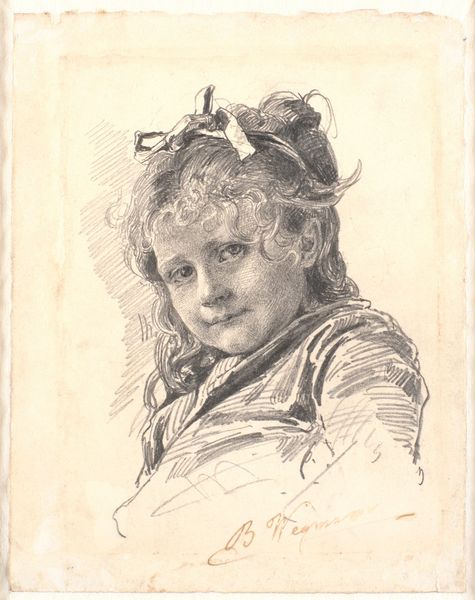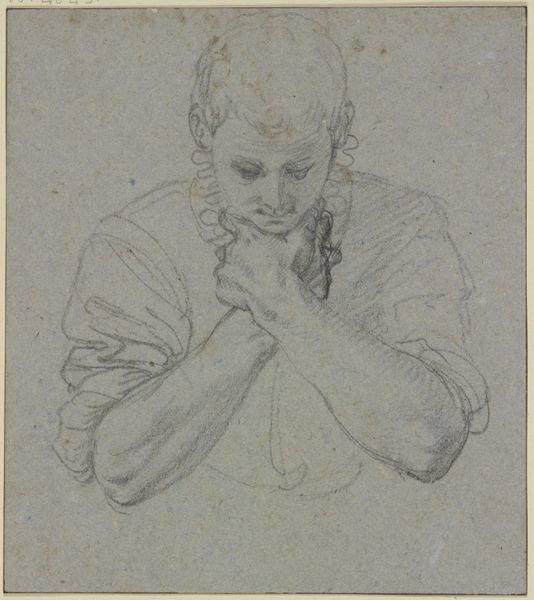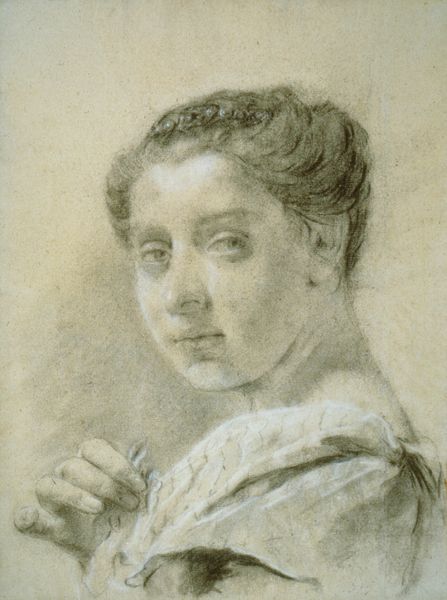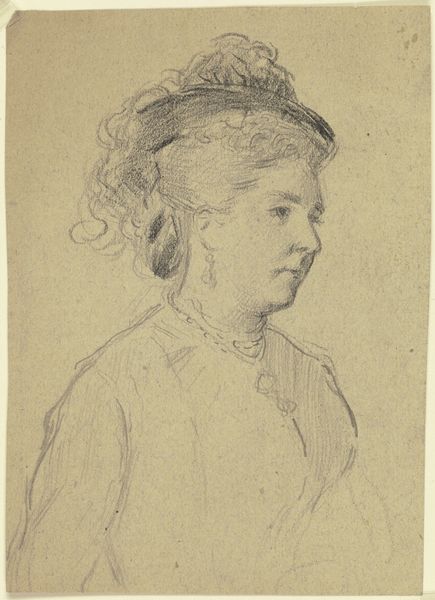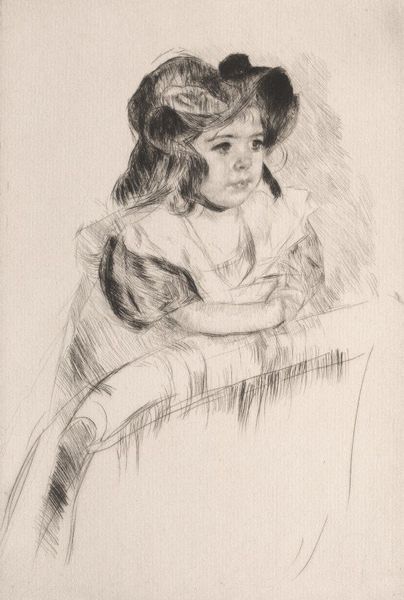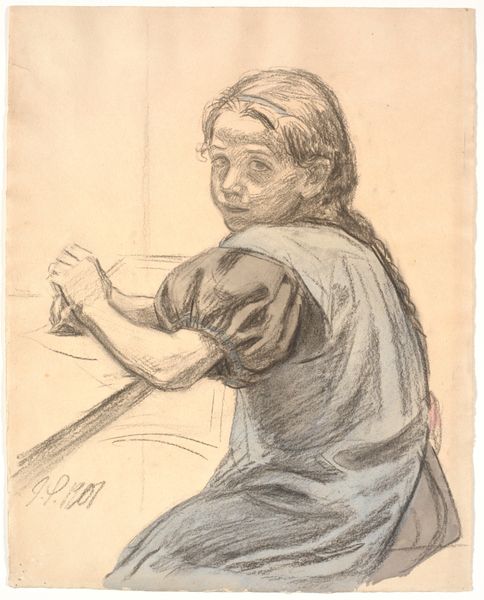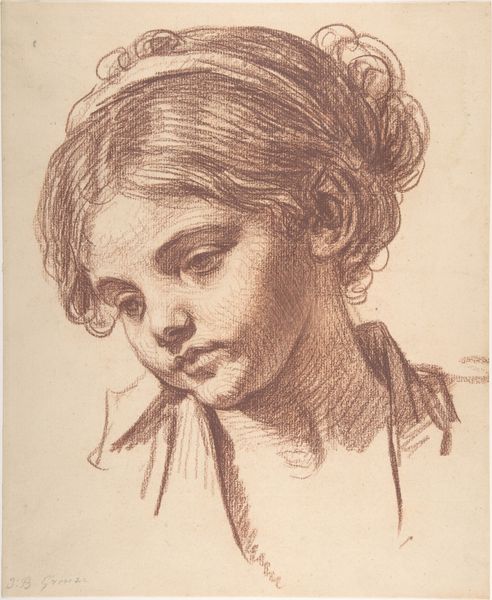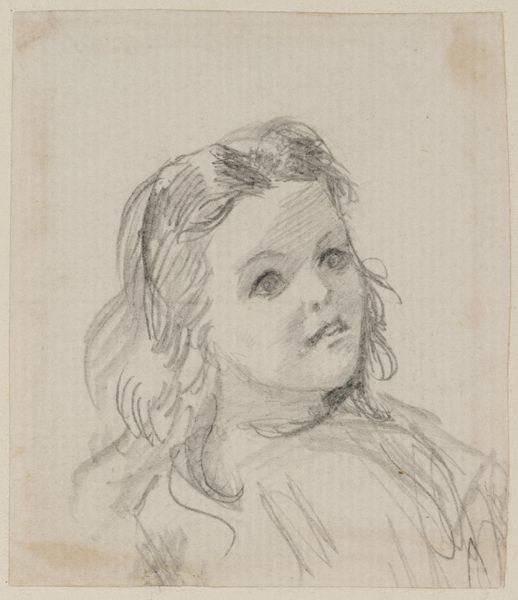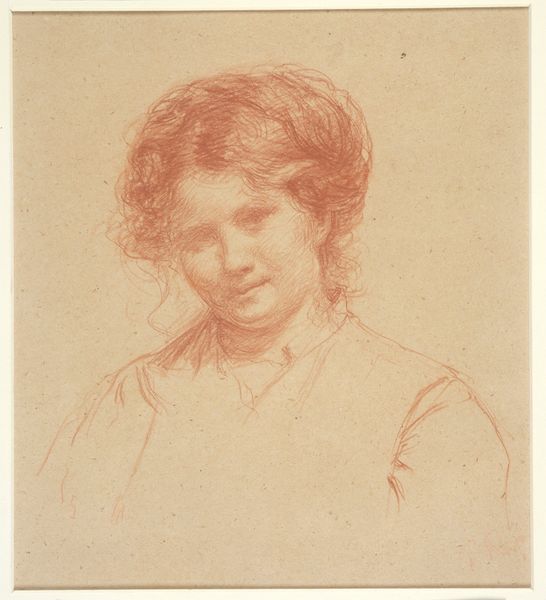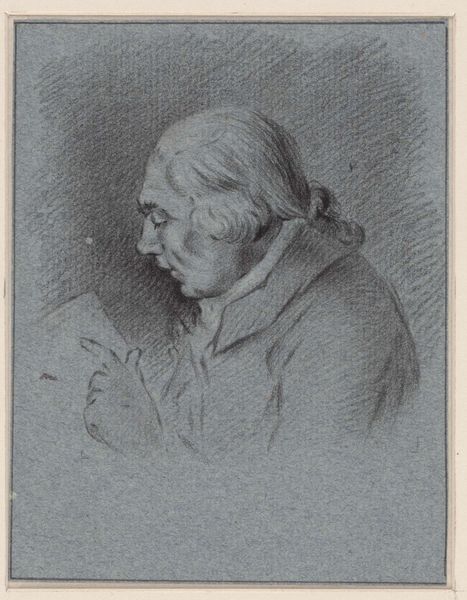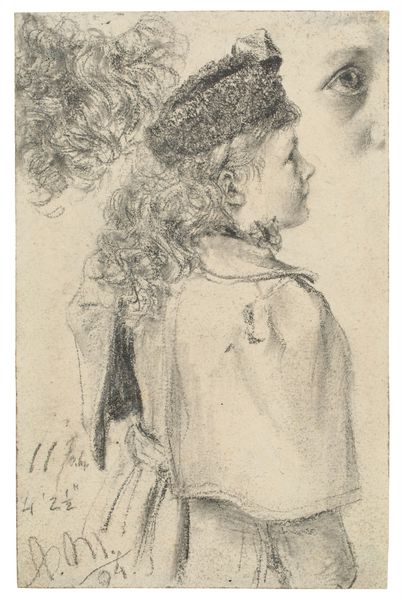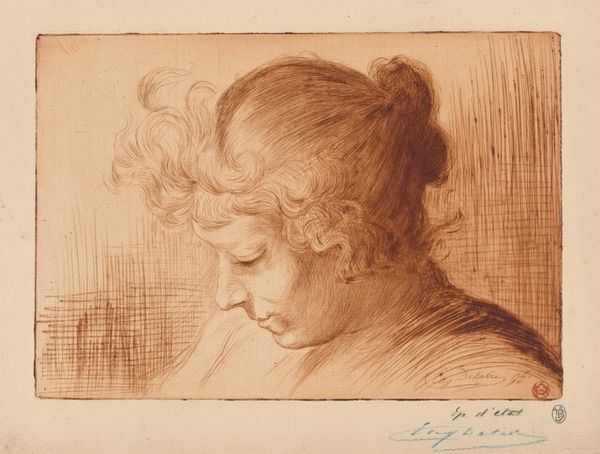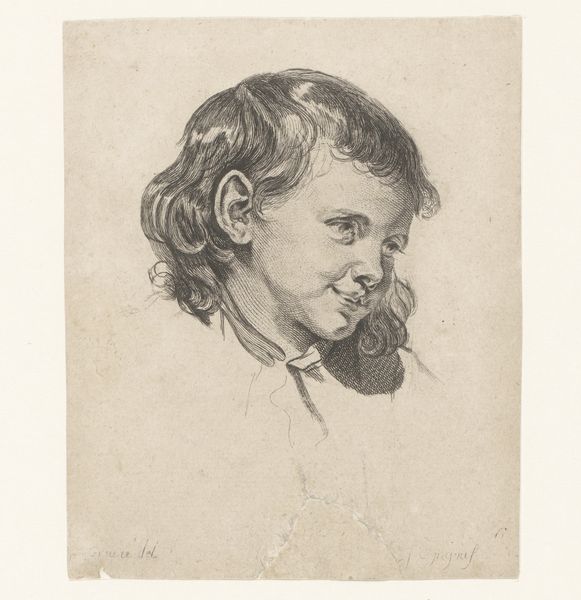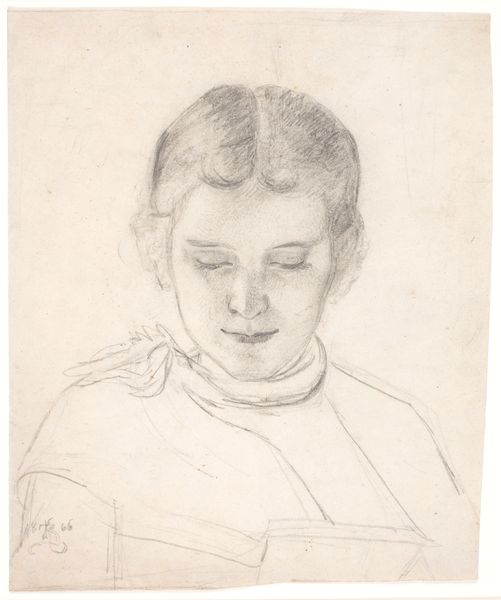
drawing, paper, pencil, chalk, charcoal
#
portrait
#
drawing
#
charcoal drawing
#
paper
#
11_renaissance
#
pencil drawing
#
pencil
#
chalk
#
charcoal
#
charcoal
Dimensions: 383 × 305 mm
Copyright: Public Domain
Curator: Let’s discuss Giovanni Battista Piazzetta's "Portrait of a Young Boy," dating from around 1735, currently held at The Art Institute of Chicago. Editor: The first thing that strikes me is the intimacy. It's soft, almost dreamlike with those hazy charcoal and chalk strokes on paper. It's far from the grand portraits of the era, isn’t it? Curator: Precisely. Piazzetta was celebrated in Venice, moving within artistic circles concerned with redefining genre scenes and elevating the everyday during the Settecento. The portrait, created using charcoal, chalk, and pencil on paper, marks a departure in representing the working class in his portraits. This piece fits into the wider eighteenth-century interest in portraying different social classes. Editor: Right, I was also thinking, with the obvious signs of erasure or redrawing here— you can almost trace Piazzetta's hand, and feel his process, trying to catch something fleeting about his subject. Is there a sense the boy was posing or just working? Curator: Most likely a commissioned work for someone within his circle. Venice, in the 1730s, presented an interesting dichotomy—opulence and widespread poverty existed side-by-side. This drawing, alongside his other drawings depicting ordinary people, offered a sense of naturalism to a genre that had traditionally depicted members of nobility. Editor: Yes, and the artist focuses our attention entirely on the material aspects of his clothing - look how the lines create different texture. Notice that unbuttoned shirt— not very common at this time for fine art. His hands! There's labour, material work suggested there; so unusual given this is technically a "portrait". Curator: Good eye; I agree, his social commentary is subtle, inviting empathy. This wasn’t necessarily revolutionary but indicates shifts in representation occurring through prints, drawings, and more informal commissions. Editor: It makes one think about how artistic training impacted artistic values as well— What kind of art was he "allowed" to create or show versus what did he choose to create, especially working in varied materials like paper and charcoal. What possibilities of craft did that invite or constrain? It seems radical for its time! Curator: Exactly, thinking about class representation alongside material culture definitely adds complexity to how we view the eighteenth century's social structure, especially since it seems quite simple upon first glance. Editor: It definitely feels more charged once we dig into those different layers.
Comments
No comments
Be the first to comment and join the conversation on the ultimate creative platform.
